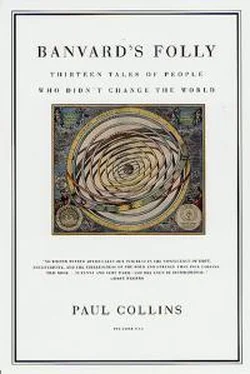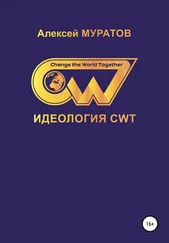But an ocean away, even as Webster wrote his tomes, Jean Fran@cois Sudre did just that. Born in the village of Albi in 1787, Sudre attended the Paris Conservatory and became a music instructor in Sor@eze. In his early years he
developed a "simultaneous method of teaching music," no trace of which remains today, although one 1819 newspaper article marveled at its brilliance. Around this time, Sudre was walking down a street when he chanced across a five-year-old boy standing by a water wagon, scraping away at a fiddle with remarkable intonation.
"Give me your violin," Sudre demanded.
The child handed it over. The teacher proceeded, rather cruelly, to turn the pegs until the violin was hopelessly out of tune, and then handed it back. The little child then methodically turned one peg after another--without so much as a tuning fork--until the instrument was back in perfect tune. Sudre asked how he'd learned to tune the instrument.
"By myself."
Sudre looked to the boy's mother, who was sitting nearby: "Madame, if this child were mine, in five or six years he'd be my fortune!"
It was to be that long before the prodigy, Ernest Deldevez, and the music professor would meet again.
Sudre moved to Paris in 1822. But at least five years before, he had turned his attentions from music lessons to the ambitious notion of developing a universal language comprised of music. The first breakthrough came in Paris,
where one day he rapidly sketched out a system of transposing letters to different musical notes; it was not so much an independent musical language as a code for transmitting existing languages.
Unsure of whether his system would work, he sequestered one of his music students. After fifteen lessons, the two were holding conversations across Sudre's apartment on Rue Dauphine-Sudre asking questions while strolling about his bedroom with a violin, and his student responding from a piano in the living room. Neighbors were mystified by the atonal call-and-response that went on for hours behind Sudre's doors.
Sudre showed off his system to friends visiting his chambers, some of whom were journalists, and by late 1823, Parisians began to hear of this strange man and his even stranger invention, the Langue Musicale. The next year Sudre tracked down the man he thought best for the job of disseminating his invention--someone not yet a man at all, actually, but a boy he had heard in the streets of Sor@eze years before.
Sudre spent 1824 with his two young prodigies, Ernest Deldevez and Charles Lasonneur, drilling them in playing and listening to his musical alphabet. The trio toured France the following year, with the two children fighting each other onstage to answer queries from Sudre's violin.
To bolster this tour, Sudre privately published a six-franc tract, Langue Musicale au moyen de laquelle on peut converser sur tous les instruments. In it, he envisions a future in which his new language will become the new standard of shorthand stenography and a boon to long-distance communication as well, since the signal could travel "up to 700 or 800 feet with a horn, oboe, flute, or clarinet." It also contained the first of many improvements by Sudre: hand signals for each of the notes, so that the deaf could communicate.
What had started out as a language of sound had now also become a soundless language--and Sudre had begun his long trek toward the dream of a truly universal system of signs.
The first real hurdle for his new invention did not come until 1827, when Sudre was invited to demonstrate it to the Institut de France. With skills honed by several years of touring and practice, Sudre and Deldevez amazed the scholars with quick musical communication of sentences in French, Latin, and Greek. Within a year a commission appointed by the institute released a report lauding the Musical Language. But the greatest potential use of the Musical Language, in the commission's view, was not so much for communicating with our brothers as for slaughtering them--"Especially in the art of war, the use of this language could be very useful to serve as a night telegraph." Sudre forwarded a copy of the commission's findings to the Minister of War, and was rewarded with an invitation to demonstrate his language before an audience of generals.
But a problem emerged: a military clarion can produce only four pitches, not the twelve that his language relied on. Sudre spent the next two years ratcheting his language down to just four notes. He also had a new name for it: the T@el@ephonie.
Trials of the T@el@ephonie were held on two hilltops in December 1829, with clarions accurately relaying such cheerful messages as You will destroy the bridge at 6 a.m. The officers were impressed by the inventor's tenacity, but in their subsequent report conceded that the T@el@ephonie would be "only very rarely useful." Still, Sudre continued refining and reinventing his musical alphabet. Over the next several years he peddled variations of it to the Institut de France as a language for the blind, the deaf, and the mute.
Another commission was convened, and Sudre received polite encouragement-but
no money. And, once again, the panel concluded that the best use for Sudre's miraculous gift of language to the disabled would be on the battlefield.
Sudre kept trying. He even demonstrated that he could teach the basics of the language in just forty-five minutes. But the problem, as repeated reports stressed, was that no instrument could project a sufficient distance in all weather conditions for the listener to clearly perceive each note. Scrambling for a solution, Sudre demonstrated the T@el@ephonie to the French navy with an instrument hooked into air compressors for maximum volume. He was warmly complimented, and a commission recommended that he receive a 50,000 franc reward.
But the money never materialized.
By now Sudre had spent twenty years and a whopping 32,000 francs of his own money on the T@el@ephonie. In desperation, he demonstrated to the French army
a system of tuned cannons to communicate messages at an earthshaking magnitude. But still he had no takers, and he began to wonder whether the military was really the best venue for his work.
"While I was still working on the application of my method, either for the use of the army or for the navy, a philanthropic idea dominated my thoughts,"
Sudre later recalled. "It was an idea of generalizing this method of communication and using it for all the people of Europe."
Sudre also began to reconsider the basis of musical language. He had shifted his T@el@ephonie from a twelve-note chromatic scale (i.e., both the black and the white keys on the piano) to the limited four notes of clarion. But a middle course lay open, one so obvious and simple that it was a marvel that no one had used it before--the diatonic scale. These are the seven "natural"
notes, the white keys on a piano, immediately familiar to anyone: do re mi fa sol la si. Today we use ti instead of si, which was the name given to the seventh note in Sudre's time in many non-English-speaking countries.
Using these seven notes as the alphabet for his language, beginning around 1829 Sudre developed the La Langue Musicale Universelle. Unlike the T@el@ephonie, which was merely a musical code for existing languages, this new system was an entire language in its own right, with its own grammar, vocabulary, and syntax. Each note of the scale acted as a basic unit of language. Combine three of these units together--sol, re, and sol--and you get a word like solresol. In Sudre's language, this word happens to mean
"language" ... and eventually, it was the name applied to his ambitious invention.
Sudre limited his words to a five-syllable maximum, thinking that anything longer would be unwieldy. This yields 11,732 possible words, a far smaller lexicon than most languages possess, but still sufficient for most needs. For maximum efficiency, Sudre banned synonyms from his language--each word had to express a distinctly different thought. His vocabulary is also structured so that reversing the order of syllables reverses the meaning of the word, such as in misol ("good") and solmi ("evil").
Читать дальше











